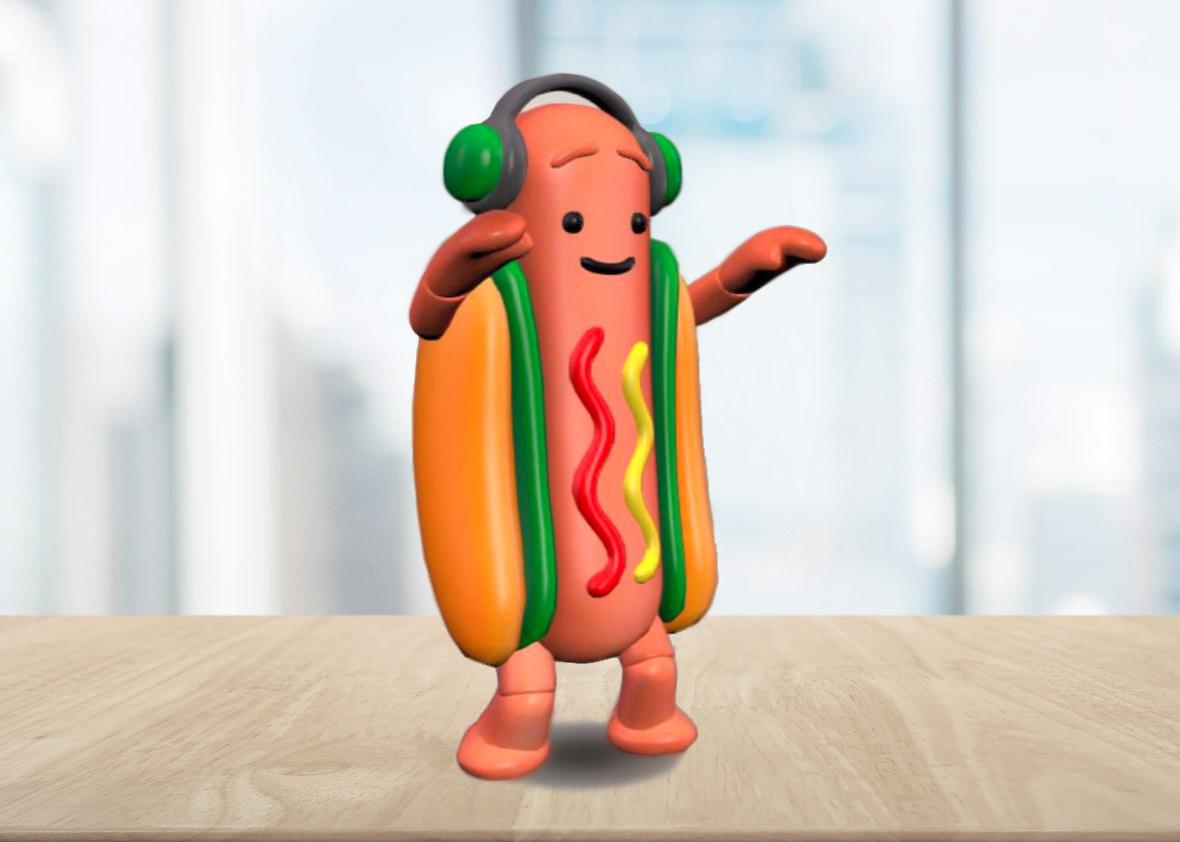Since the dancing baby delighted our screens more than two decades ago, memes have taken various forms, their popularity aided as tools have made it easier to create memes of our own. Still photos and images, like the now ubiquitous text-overlaid image memes, can be easily created on the fly with some basic Photoshop skills. Giphy offers a whole trove of GIF-style memery. Internet discussion boards like Reddit are a constant source of new viral fodder, too. But memes, going forward, are venturing into a new sphere—the real world—thanks to augmented reality.
Today, Snap (the company behind Snapchat) introduced Lens Studio, a desktop app for creating your own Snapchat lenses. The steps to create one are straightforward. First, upload your artwork—you’ll need to have created a 3-D image in another app before importing it into Lens Studio. Then, you can use Snap’s program to animate your creation with movement patterns and animation triggers. From there you submit your design. Once approved by Snapchat, you’ll get a Snapcode you can use to share with friends and followers.
Users have been able to upload location-based geofilters themselves, but with the addition of Snapcodes—glorified QR codes—these user-uploaded world lenses will be different. You can only use a geofilter if you’re in a specific area, which limits virality. With a shareable Snapcode, however, a filter can be shared with friends, friends of friends, and contacts near and far—and that is what’s necessary for a creation to enter meme territory.
Snap has been building up to this. The company pioneered and popularized the augmented reality lens, starting with selfie-targeted options like the puppy filter—which pastes a dog’s nose and ears onto your face—and the flower crown filter, which adorned your head with a delicate wreath. Since then, Facebook and Instagram have caught onto the trend and implemented similar filters in their own apps. Snapchat, meanwhile, has continued to expand its AR filtering options. World lenses, the type of filter users are now able to create through Lens Studio, inserts animations or graphics into the world around you (as captured by your phone’s rear-facing camera). The results can be delightful or, more often than not, incredibly silly.
This is what we saw in Snapchat’s first true AR meme, the dancing hot dog that surged to stardom this summer. It was just a 3-D animation of a hotdog that could breakdance, but it made its way into the hearts (and even Twitter feeds) of many Snapchat users. In this case, Snapchat made the dancing hot dog itself, but Lens Studio opens Snapchat up for dozens, if not hundreds, of new and different such augmented reality meme opportunities.
But Snapchat’s success as a platform for memes will depend on how Lens Studio is adopted. Snapchat tried to make the app as easy to use as possible, and indeed, in my explorations Thursday, it does seem relatively straightforward. Lens creation will probably come most easily to those with some 3-D design or programming background, but for those without, it’s something that can be learned and practiced. (Whether or not you have a knack for creating lovable, bizarre, or otherwise shareable augmented reality graphics, however, will take some time to ascertain.) It’s certainly not as easy as pasting some text over an image of Willy Wonka, but even that basic level of meme creation seemed daunting in its early days.
One issue Snapchat could encounter with the virality of its lenses is shareability. Until now, you’ve been able to share memes as website and Tumblr embeds, in messages, email, and social media. Snapchat, by nature, is more insular. This likely won’t prove too big of an issue, though: Many already download their snaps to their camera roll to post on other social apps and—even if they’re discouraged—take and share screenshots. And while not Facebook’s size, Snapchat is a large social network in its own right
Another potential hindrance to augmented reality’s meme-tastic future is if lens creation gets co-opted by advertisers and brands. If you’re looking through the lens options for your snap and are only seeing the Pillsbury Doughboy, the Apple logo, and a talking Outback Steakhouse steak, it might take the fun out of the platform as an avenue for meme creation. Snap has done a good job of balancing its mix of brand and user-uploaded content thus far—and, honestly, a talking steak in my snaps doesn’t sound so bad.
The dancing hot dog craze this summer was a peek at what the future holds. Now that developers and creative types can distribute their own versions, a world of augmented reality memes is almost here.
